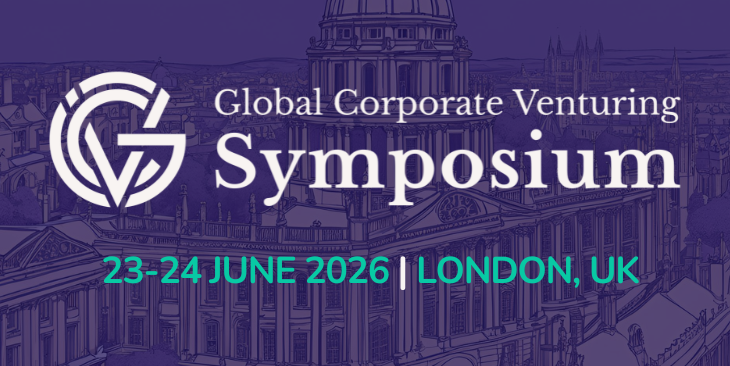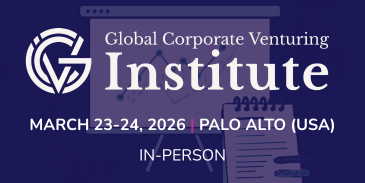SoftBank just led a $40bn funding round into OpenAI and is backing the $500bn Stargate AI project announced by President Trump. Big bets haven't always gone well for the investment fund - is this time different?

Alok Sama was a close advisor to Masayoshi Son as the SoftBank CEO transformed his telecoms and investment business into a tech empire. While that period saw some inspired dealmaking, like the acquisition of Arm, it is also remembered for a series of Vision Fund investments that resulted in heavy losses.
Now SoftBank is back with a new series of deals, leading a $40bn investment round into OpenAI. This is the largest ever funding round for a private tech company, and values the maker of ChatGPT at $300bn. SoftBank is also a lead partner in The Stargate Project, a massive AI infrastructure initiative aimed at investing up to $500bn in the United States by 2029.
Given SoftBank’s patchy record, these big bets might raise some eyebrows. But Sama thinks Son’s new AI projects will be different.
“The Vision Fund was way ahead of its time [in 2016] in terms of [there not being] a corpus of that size to be invested in for AI-related things. You just didn’t have enough opportunity,” he tells Global Corporate Venturing. “It’s now realistic to think in terms of investing $100bn and potentially a lot more in AI infrastructure, right?”
On the Stargate Project, says Sama, OpenAI is in the driving seat. “My understanding is that, from an operational perspective, OpenAI is in charge. And they are addressing what is a very legitimate bottleneck, which is data centre infrastructure in the broadest sense. Not just the data centres: the real estate, the warehouses, the [server] racks, and, of course, the Nvidia and other chips that go into these servers. Also the power infrastructure.”
It is hard, however, not to be reminded of the $100bn Vision Fund, which SoftBank raised in 2016, with $45bn coming from Saudi Arabia. The fund threw large amounts of capital at tech startups, serving Son’s ambition of bringing “happiness to all” through technological development. It became notorious following disasters like WeWork’s failed IPO and the collapse of portfolio companies that had received heavy investment, including Wirecard and Katerra.
Sama recalls this pivotal time at SoftBank in his book The Money Trap. He joined the company as CFO in 2014 and spent the next five years by his boss’s side before leaving the company in 2020. While he is no longer an insider, he says he is confident that Stargate is not a repeat of the Vision Fund. This time the market can handle the injection of capital, and SoftBank is well-placed to help with infrastructure.
“One of the things which probably hasn’t gotten enough time in the media is that SoftBank used to be one of the biggest generators of solar power in the world,” he says, referring to SB Energy, a renewable energy project platform backed by SoftBank.
“It’s a very significant business, SB Energy. And that’s part of what SoftBank will bring to the table: power infrastructure.”
“One of the things which probably hasn’t gotten enough time in the media is that SoftBank used to be one of the biggest generators of solar power in the world.”
So now the Japanese technology company is once again trying to set itself up to become a leader in the tech of the future. This is the story of Son’s career: amid the failed ventures, there are spectacular successes. He was an early investor in Alibaba, the Chinese e-commerce giant; he persuaded Steve Jobs to give him distribution rights to the iPhone in Japan – supposedly before anybody else knew of the phone’s existence; and he acquired the UK AI chip design company Arm for $31bn in 2016, which went public in 2023 and closed at $65bn on its first day. At the time of writing, Arm’s market capitalisation is over $110bn, with SoftBank holding 90% of the shares.
It might look like there is a hint of the roulette table to all of this, but Sama thinks describing Son as a gambler is a “mischaracterisation”.
“[Son] says he’s a crazy guy who lives in the future. But if you think about what that means, if you’re living in the future, you’re reading tomorrow’s headlines,” he says.
“When he makes these mega investments, in his mind, there’s just no risk. So he has no issues with levering up or betting the company 10 times over, because he’s just so sure of himself and his view of where the technology is that there is no risk.”
The Money Trap
Sama’s book chronicles a time starting in the late 1990s, when internet stocks were soaring and “smug” bankers were outpaced by young overnight tech billionaires. Sama, who started out in investment banking, joined SoftBank in 2014. Masayoshi Son reportedly thinks of the company as an empire and there was certainly something imperial about the business Sama joined, with its autocratic corporate governance, its hunger to conquer new sectors, and its bitter succession feuds.
The Money Trap follows Son’s monomaniacal dealmaking campaign, where he charged around the globe looking for partners who could help him change civilisation through technology. Sama recounts how Son disturbed Arm’s chairman’s sailing holiday with an acquisition bid, cut short a meeting with Deutsche Telekom executives that he found condescending, and fascinated Narendra Modi with his techno-optimism.
This is against a backdrop of countless private jet flights, meetings with figures like Mark Zuckerberg – who boasts of killing a chicken – and a smear campaign against Sama and SoftBank Group president Nikesh Arora that unsettles the emperor’s inner circle.
The Vision Fund, with its unprecedented generosity of capital, is described as popping up on Silicon Valley “like that alien, menacing, and transformative Space Odyssey monolith,” changing the venture capital landscape overnight. Its spectacular losses after the tech bubble burst are covered in the epilogue.
“I think the media loves the story of a multibillionaire brought down to Earth – hubris, or whatever.”
Sama was never directly involved in the Vision Fund’s management, but he did raise concerns with Son at the time about the wisdom of some of the investments. Even so, today he speaks up for his old boss.
“I think the media loves the story of a multibillionaire brought down to Earth – hubris, or whatever,” he tells GCV.
“But here’s the reality. You can make as much fun as you want, but along the way he made over $100bn in Arm [at the February market cap of $170bn]. And that makes up for a bunch of WeWorks or some of the other accidents along the way.”
Son yet again rises
Son retreated from the spotlight after the Vision Fund became a byword for VC failure, just as he had disappeared twenty years earlier when the dot com crash wiped out almost all his net worth.
But now he is making another return to the stage with the Stargate Project and a prominent partnership with OpenAI. Similarly, Arm is now expected to release its own in-house chip this year, in a move to disrupt the semiconductor design sector, which Arm has, until now, supplied rather than competed with.
And through the Vision Fund’s successor, Vision Fund 2, SoftBank remains one of the most prolific investors on GCV’s CVC Funding Round Database. It is still backing futuristic tech through its investments in companies like Helion, a nuclear fusion company, and QuEra Computing, which is making a neutral atom quantum computer.
This persistence is probably because, as Sama points out, Son is a true believer.
“There is something very special about [him],” he says of Son. “He’s not like a Wall Street guy, who’s like, ‘Hang with me, I’ll make you rich, or get you a big bonus’. No, no.”
“It goes back to [his depiction in my] book, and the number of times he talked about changing the course of humanity. And this thing about happiness for everyone, it sounds kind of cheesy, but the guy means it. I mean, you’re face to face with him, he makes you feel that he means it. And I think he really does mean it.”








